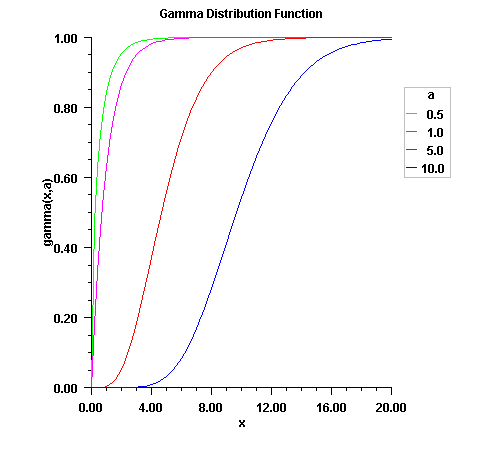Evaluates the gamma cumulative probability distribution function.
Parameters
- x
- A
doublespecifying the argument at which the function is to be evaluated. - a
- A
doublespecifying the shape parameter. This must be positive.
Return Value
A double specifying the probability that a gamma random variable takes on a value less than or equal to x.
Remarks
Method Gamma evaluates the distribution function, F, of a gamma random variable with shape parameter a; that is,
where ![]() is the gamma function. (The gamma function is the integral from 0 to
is the gamma function. (The gamma function is the integral from 0 to ![]() of the same integrand as above). The value of the distribution function at the point x is the probability that the random variable takes a value less than or equal to x.
of the same integrand as above). The value of the distribution function at the point x is the probability that the random variable takes a value less than or equal to x.
The gamma distribution is often defined as a two-parameter distribution with a scale parameter b (which must be positive), or even as a three-parameter distribution in which the third parameter c is a location parameter. In the most general case, the probability density function over ![]() is
is
If T is such a random variable with parameters a, b, and c, the probability that ![]() can be obtained from
can be obtained from Gamma by setting ![]() .
.
If X is less than a or if X is less than or equal to 1.0, Gamma uses a series expansion. Otherwise, a continued fraction expansion is used. (See Abramowitz and Stegun, 1964.)

See Also
Cdf Class | Imsl.Stat Namespace | Example